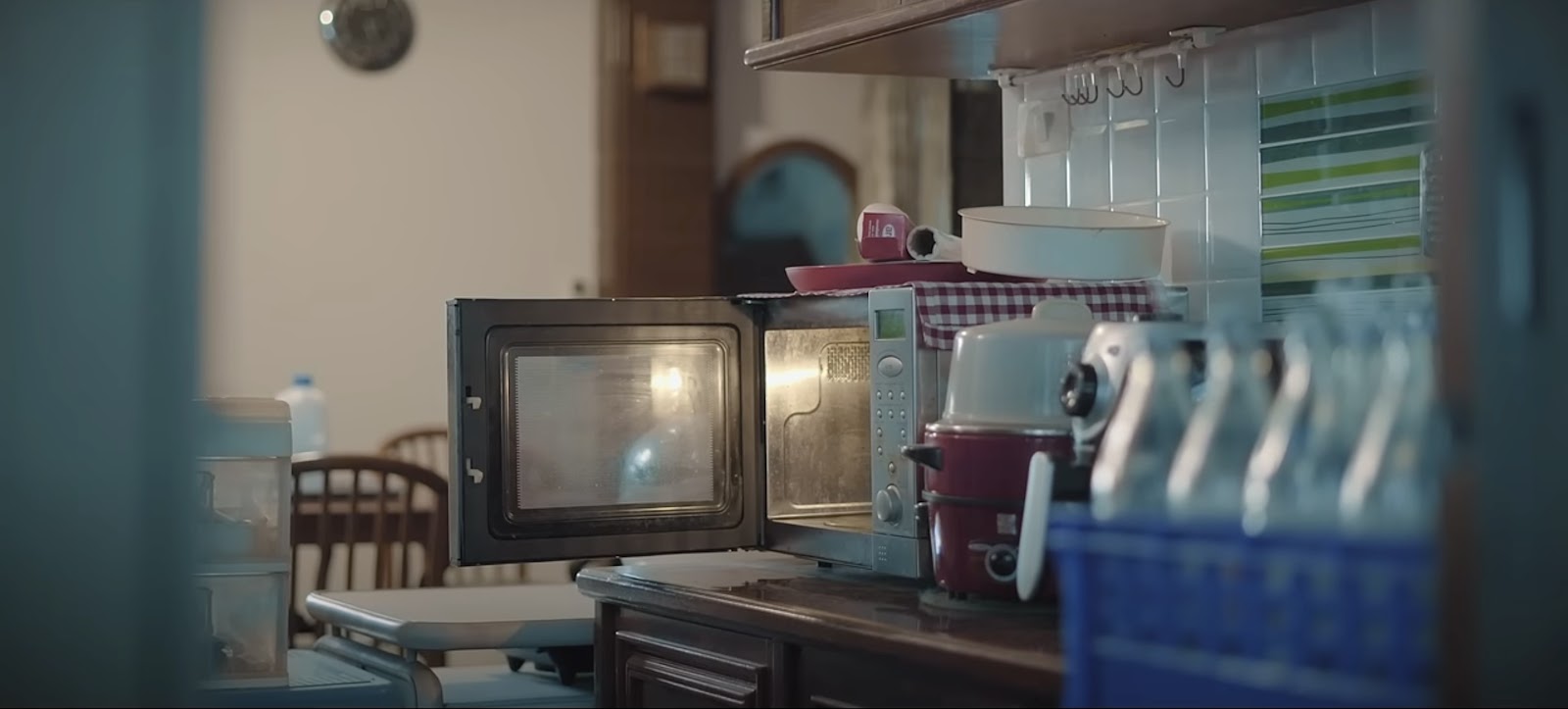'Slap' (2015)
Coursework 5
Similarly, to ‘Echo’ the discourse of identity is explored. In ‘Echo’ Caroline tries to re-find herself in a reality without her father, whilst in ‘Slap’ Conner tries to construct his own identity free of boxes and labels. Both in the end get framed as outsiders to those around Caroline falls into a vicious cycle of grief and Conner is labelled as an outsider by his friends resulting in him confronting his identity and deciding whether to oppress or liberate himself. We are invited to truly empathise with Conner on a different level than previous short film ‘protagonists’. ‘Echo’ at times invites us to empathise with Caroline but this is ultimately overpowered by the spectator’s moral compass.
The narrative is arguably left open ended as we are unsure where that leaves Conner. This could be reflecting Conner’s own feelings of confusion about the future, his identity and the impact the party will leave on his relationships. This could illustrate the constant battle he has been facing in regard to his identity and the feeling of never truly being accepted for who he is.
The editing nicely contrasts Conner’s internal conflicts and his external conflicts which comments on the complexities of relationships in adolescence. Cutting dramatically between his two conflicting identities reflecting Conner’s duality. The rhythm and pace of the editing matches the escalating tension in the film reflecting the growing tension in both Conner and the spectator. Quick cuts during moments of confrontation emphasise feelings of chaos and urgency, inviting the spectator into a more intimate perspective of Conner’s emotional conflicts. The film balances long takes and quick cuts to show that Conner is more comfortable in is makeup and dress than he is in the boxing gym. Perhaps showing that one was a choice and the other is a reality that is forced onto him. This could be reflecting pressures for boys by their dad’s to be truly masculine and continue their legacy. This could be commenting also on the toxicity of the standard of masculinity in sports and how it can negatively impact individuals especially the youth who are still trying to find their identity in a conformist society that favours traditional values.
The idea of reflecting on identity is heavily explored through the mise-en-scene. This is similar to ‘Echo’ which also uses reflections to position Caroline as cut off from the world around her. Reflections in ‘Slap’ are used to illustrate Conner’s conflicting duality and his uncertainty in himself. The cracked mirror in particular is a powerful metaphor for his broken identity as he becomes increasingly unsure of which identity is his. The many reflections could be a motif of confusion surrounding identity in the youth while also illustrating Conner’s internal battle of deciding to keep the façade or finally have the freedom he practices in private. The mise-en-scene also shows the discourse of gender stereotypes. Conner’s room is painted blue forcing typical traditions of masculinity onto him. The posters of women (male gaze) and boxing as well as the gym setting create a stereotypically masculine setting. This makes Conner’s makeup standout in the setting further framing him as an outsider in his own house. The setting is mundane which adds to the realism of the film demonstrating that these are issues that are present in our society. Like ‘Over’, ‘Slap’ utilises a very typical British estate to make the film more real and raw. The film is consumed with muted colours until Conner reveals his true self. Perhaps emphasising the feeling of being an outsider and the pressure of being masculine.
Conner is positioned as the hero but a hero who is unable to save himself. He is not afraid to defend his friend and is more afraid of being caught with his makeup on rather than getting into a fight where he is outnumbered. This emphasises the bravery to accept his own identity and the bravery to reveal himself to others which surpasses any physical threats. This calls out the toxicity of masculinity in a judgemental and conformist society.
‘Slap’ explores complex societal issues and tries to articulate the impact they have on individuals in society. Although being a long short film it shows how simple settings around us can enhance the message of the film and add to its realism. It establishes a deep connection between the protagonist and spectator adding another layer of emotional depth to the film. It also shows that a minimalist approach in film form can enhance a rich narrative emphasising the importance of a strong narrative. It is thought provoking and comments on how films can convey profound messages through simple actions and decisions made in the narrative.





Well done. Superb on film form, narrative construction and theme. I love 'a warm light treacles in'
ReplyDelete